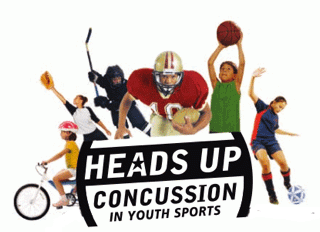by Shannon Henrici
Did You Know that a Concussion Can Change Your Child?
There’s no doubt that sports are a great way for kids and teens to stay healthy, as well as learn important leadership and team-building skills. However, there are unacceptable risks in sports, especially when it comes to a concussion. Do you know anyone who has survived a concussion or traumatic brain injury? If so, then you know how long the symptoms can persist and how dramatically it can change their life.
 Survivors of a traumatic brain injury have reported dramatic changes in behaviors, memory loss, depression and even difficulty concentrating. The medical community has labeled this as post concussion syndrome. It doesn’t discriminate against age, anyone who has had a significant head impact are at risk. Car crashes, hits to the head in sports, falls from any height, and even shaken baby syndrome– just to name a few causes.
Survivors of a traumatic brain injury have reported dramatic changes in behaviors, memory loss, depression and even difficulty concentrating. The medical community has labeled this as post concussion syndrome. It doesn’t discriminate against age, anyone who has had a significant head impact are at risk. Car crashes, hits to the head in sports, falls from any height, and even shaken baby syndrome– just to name a few causes.
In order to decrease the numbers of concussion cases, the CDC and the NFL have teamed up to create a movement to help educate parents, coaches, and athletes about the signs and symptoms. Here are a few things that every parent needs to know before signing their child up for athletics:
What is a concussion?
A concussion is a type of traumatic brain injury caused by a bump, blow, or jolt to the head or by a hit to the body that causes the head and brain to move rapidly back and forth. While most athletes with a concussion recover quickly and fully, some will have symptoms that last for days, or even weeks. A more serious concussion can last for months or longer.
What can you do as a parent?
- Know the signs and symptoms of a traumatic brain injury. Read all the latest information on the CDC Heads Up site. Talk with your coaches, athletic trainers, players and others in the sports community about your findings. The more eyes on the game the better chances of catching possible injuries.
- Team up with the coach and other parents. Get together with anyone involved in the athletic department to design a concussion action plan, if they don’t already have one. Provide resources for everyone to read about the signs and symptoms of a concussion. The more involved, the better the outcomes.
- Take action. Order the poster for young athletes created by the CDC in partnership with the NFL Health and Safety. Hang it in the locker rooms for everyone to see. Encourage coaches, other parents, athletes and anyone involved in the athletic department to read the educational materials about concussions signs and symptoms provided by Heads Up.
- Educate your athlete on when to sit it out. The overwhelming message in sports has been “Be tough! Shake it off!” Your child needs to know that it is all right to sit out a game or too if they don’t feel right. Especially if they are recovering from a hard hit to the head, sitting out is mandatory.
- Know about the Zachary Lystedt law protecting young athletes. The Zachary Lystedt law was created to protect young athletes, and it is being passed in many states. Check to see if your state has approved it and if your athletic department adheres to the regulations.
- When in doubt seek medical attention. If you suspect a possible head injury, don’t hesitate to seek medical attention. You can’t be too careful when it comes to a head injury. The CDC reports that over 50% of all head injuries go unreported. There are approximately over 173,000 cases of traumatic brain injuries in young athletes under the age of 19 each year.
All parents, coaches, and school and health care professionals need to be dedicated to improving the lives of young athletes nationwide. I encourage you to join the NFL Commissioner’s call to action to hang a concussion education poster in every locker room and school nationwide. Concussions can happen in any sport. So I encourage you to help get concussion education into the hands of coaches, parents, and athletes on every sideline and bench nationwide.
To learn more about concussion, visit CDC’s website.
Young athletes can benefit from learning diaphragmatic breathing, visualizing, and positive confidence building statements. The Indigo Dreams CD Series introduces children and teens to techniques that can help to improve their confidence, stamina, and reduce stress associated with sports performance. Proper breathing is critical to athletic performance.